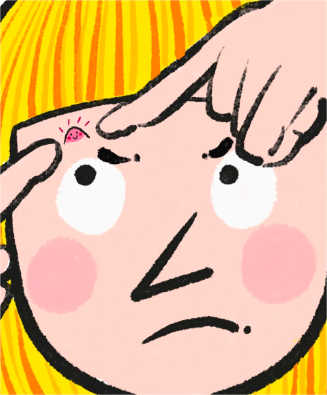Acne is een veelvoorkomend huidprobleem met verschillende vormen. Hier zijn enkele veelvoorkomende vormen van acne:
Comedonale acne (mee-eters/whiteheads)
Uiterlijk: Comedonen zijn het belangrijkste kenmerk. Het zijn verstoppingen van talg, dode huidcellen, enz. Ze komen vaak voor op de neus, neusvleugels, neuslippenplooien en kin. Ze zien eruit als licht verheven bultjes met zichtbaar zwart/wit vuil in vergrote poriën.
Ernst: Licht; heeft enige invloed op de esthetiek.
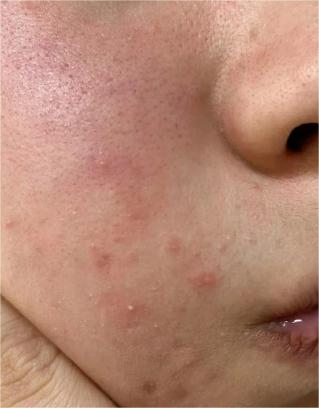
Papulaire acne
Uiterlijk: Papels zijn kleine, stevige bultjes, variërend in grootte van een gierstzaadje tot een erwt (1-5 mm in diameter). Ze komen vaak voor op het voorhoofd, de wangen, de kin en de slapen. Ze zijn dieprood of lichtrood van kleur en hebben een stevige textuur. Sommige papels kunnen een comedo of een niet-zwarte talgprop aan de bovenkant hebben.
Ernstigheid: Licht tot matig. Bij onjuiste verzorging kunnen er puistjes ontstaan.
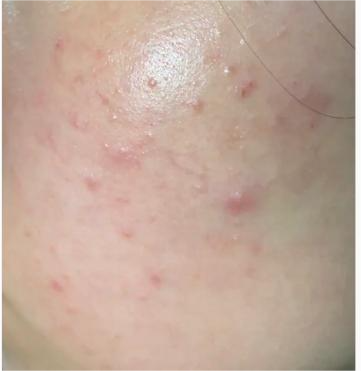
Pustuleuze acne
Uiterlijk: Puisten zijn grotere rode puistjes die lijken op erwten, zandkorrels of blaasjes. Ze komen meestal voor op de wangen en ontwikkelen zich vanuit papulaire acne. Puisten hebben een gezwollen bovenkant gevuld met witte pus en zijn gevoelig voor scheuren. Onjuiste behandeling kan leiden tot postinflammatoire hyperpigmentatie en littekens.
Ernst: Matig; meestal gepaard met papels; een groter gebied lijkt rood.
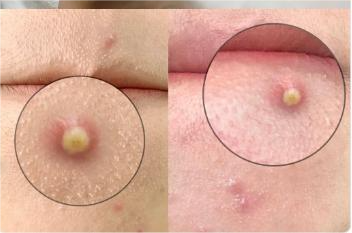
Nodulaire acne
Uiterlijk: Noduli zijn grotere (ongeveer 5 mm), donkerrode, harde knobbeltjes. Sommige noduli kunnen paarsachtig of donkerbruin zijn. Ze verschijnen vaak op de wangen en langs de kaaklijn. Noduli hebben meestal geen zichtbare puistjes, maar kunnen pus, bacteriële resten, mijtkadavers, talg en keratine bevatten. Drukken op de noduli veroorzaakt pijn.
Ernstigheid: Matig tot ernstig; dieper gelegen infecties kunnen de lederhuid bereiken.
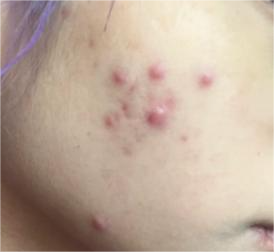
Cysteuze acne
Uiterlijk: Cysten zijn grote, ronde of ovaalvormige laesies. Ze komen vaak voor op de wangen, kin en langs de kaaklijn. Ze kunnen zo groot zijn als een sojaboon of zelfs groter. Wanneer je erop drukt, ziet de kop er zwart uit, terwijl het lichaam geelwit, doorschijnend en met talg gevuld is. Ze voelen fluctuerend aan bij aanraking en produceren continu pus.
Ernst: Ernstig; moeilijk te genezen, vatbaar voor littekens, vereist onmiddellijke medische hulp.
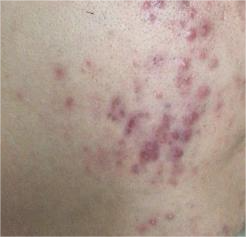
Deze beschrijvingen zijn algemene gevallen, en specifieke soorten acne kunnen variëren. Het is belangrijk om acne te begrijpen om het goed te kunnen behandelen. Bij ernstige acne is het echter raadzaam om een dermatoloog in een ziekenhuis te raadplegen voor tijdige behandeling.
